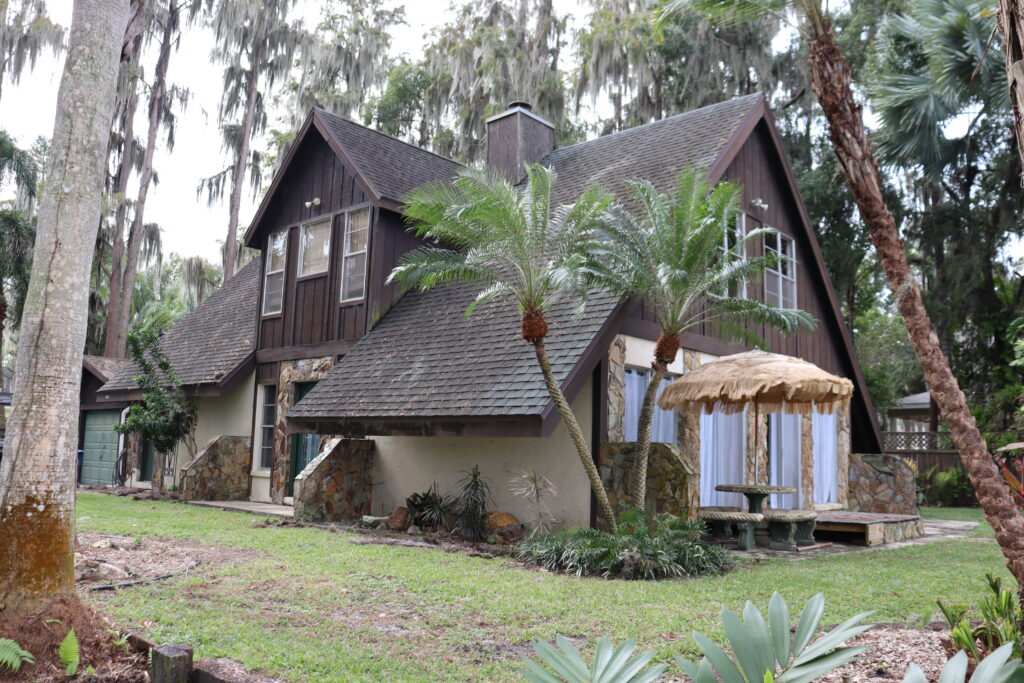What Are The Black Streaks On My Roof?

Have you ever asked yourself, “What are the black streaks on my roof?” Black streaks on your roof indicate the presence of algae known as Gloeocapsa magma. While it can be displeasing to look at, Gloeocapsa magma can impact your roof far beyond its aesthetics. Here’s why:
- It feeds on the limestone filler in your asphalt shingles.
- The algae create an ideal environment for lichens and moss.
- Lichens and moss growth can lift and damage your asphalt shingles.

In short, the algae must be treated properly and in a timely fashion in order to prevent irreversible damage to a roof. If you’re noticing black streaks on your roof, read more below to understand the full extent of the problem and how to get rid of it.
Where Black Streaks Come From
Gloeocapsa magma has always been prominent in the southern regions of North America. It’s now moved into northern parts of the United States and Canada because of its ability to survive in a variety of climates and its tendency to travel.
Once you notice one roof in your neighborhood is contaminated with the algae, it’s safe to assume that your roof will be affected soon. When the algae become airborne, they travel from roof to roof. You’ll typically see Gloeocapsa magma forming on areas of your roof that don’t receive direct sunlight.
Why You’re Seeing Black Spots or Streaks
Once the algae have infested your roof, you’ll see black spots begin to form. This is the first sign that you need to schedule a treatment for your roof. As the algae feed on your limestone and grow in numbers, they’ll begin to spread and become more visible.
The algae are green in color. So, when you look at your roof and see the black streaks, you aren’t seeing the algae but their protective shield. These shields serve as their protection from UV radiation.
Gloeocapsa magma is invisible to the naked eye and has a mass equivalent to a hydrogen atom. This means that once you can see the black streaks, you aren’t seeing one or two of these organisms, but millions.
How Gloeocapsa Magma Can Destroy Your Roof
Gloeocapsa magma feeds on the limestone filling between your asphalt shingles. This weakens the shingle and can result in permanent damage if left untreated.
As the algae spread, water becomes trapped on your roof and creates a humid environment. The humidity provides the perfect breeding ground for other contaminants such as moss and lichens.
When moss and lichens grow on your roof, their roots will burrow between your shingles and weaken the overall structure. The roots absorb water and debris, delaying your roof from drying efficiently.
Any type of algae growth will shorten the lifespan of your roof. If you don’t take immediate action to treat your roof, it can result in a premature roof replacement and lead to further issues such as:
- Health problems
- Inefficient heating and cooling
- Rise in utility bills
- Reduced curb appeal

The Perfect Roof Treatment Process
Gloeocapsa magma will not go away on its own. As with any infestation, it’s better to act sooner rather than later.
Using our low-pressure soft wash system, we can treat your roof and remove the Gloeocapsa magma. Once the solution is applied, the gloeocapsa magma can be washed away and the black streaks will disappear. Any moss and lichens on your roof will turn white and fall off over the course of a few weeks.
Roofs are delicate and should only be cleaned by experts. Attempting to remove contaminants with too much pressure or the wrong cleanser can cause irreversible damage. Plus, climbing up a ladder with heavy equipment adds risk. Professionally maintaining and treating your roof will elongate its lifespan and save you the cost of replacement or major repairs.
